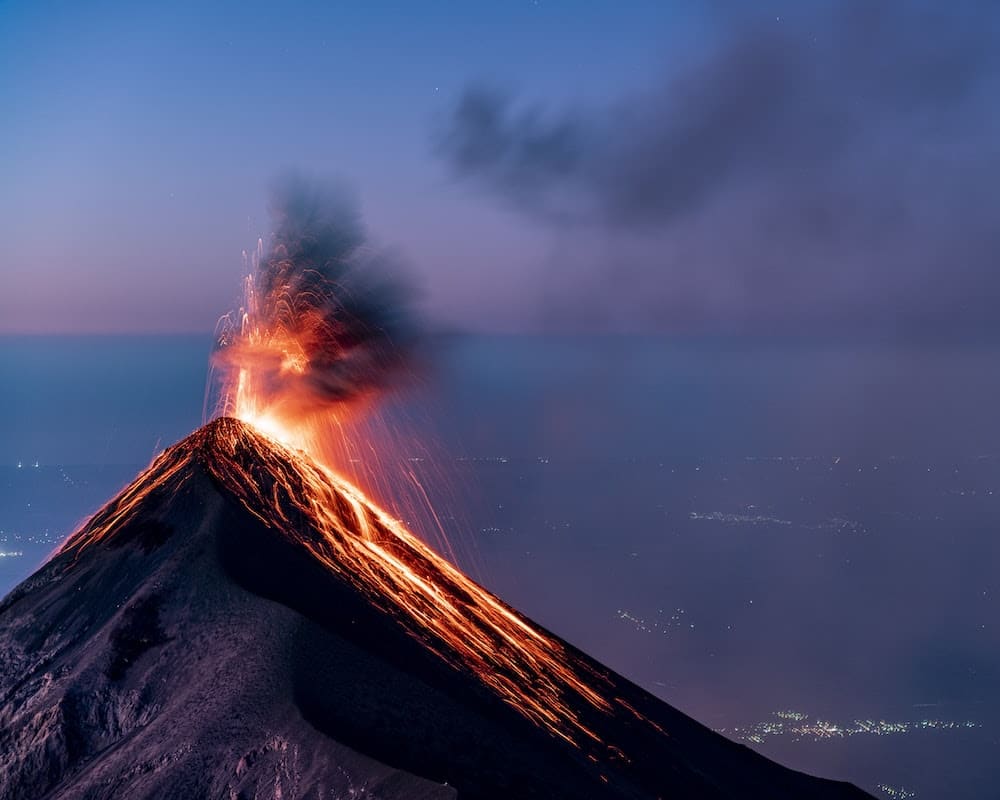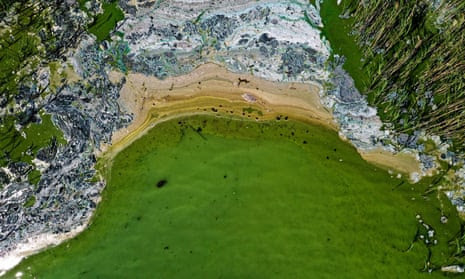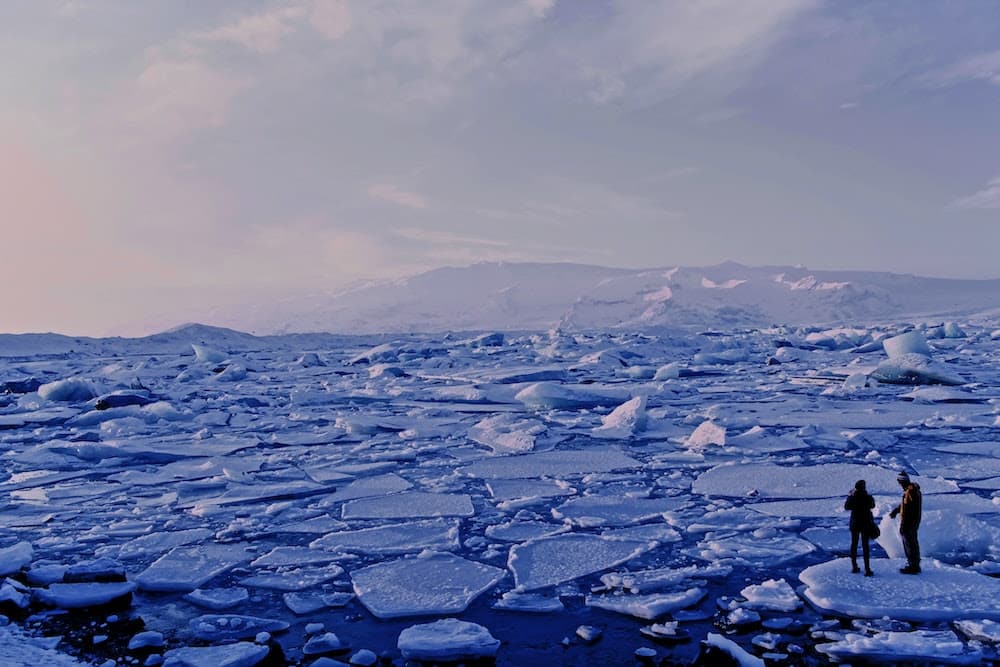
Volcanic activity is mainly linked to movements of the Earth’s crust, the lithosphere, which is divided into tectonic plates. According to the Smithsonian Institution, there are 1,536 active volcanoes on Earth.
The formation of volcanoes is associated with three different geological characteristics. The majority of volcanoes form when two tectonic plates converge toward each other. This zone, where the oceanic plate generally sinks beneath the continental plate, is known as the subduction zone. These are generally the most dangerous volcanoes, such as Pinatubo in the Philippines, Mount St. Helens in the USA or Vesuvius in Europe. Other volcanoes form in areas where two tectonic plates are moving apart. These zones are usually submarine mountain ranges that form oceanic ridges.

The Hunga Tonga–Hunga Ha’apai
The Hunga Tonga volcano in the Pacific, for example, falls into this category. Volcanoes can also appear at the center of a tectonic plate, above what is known as a hot spot, formed by magma rising to the surface and breaking through the earth’s crust, such as the Piton de la Fournaise volcano on Reunion Island.
The surface area of tectonic plates is measured in steradians, the unit of measurement of solid angles that cuts the surface of a sphere, the measured surface being the tip of a cone that has its apex at the center of the sphere. The plates that form the Earth’s crust vary in size: some are composed solely of oceanic lithosphere, while others are both oceanic and continental.
The seven main tectonic plates that cover the Earth’s surface are :

The Pacific Plate
The Pacific Plate, with a surface area of 2,576 steradians, covers virtually the entire Pacific Ocean and includes half of New Zealand’s South Island, the Baja California peninsula and part of southern California.
The African Plate, with a surface area of 1,440 steradians, covers all of Africa except part of East Africa and the Moroccan Rif. It also includes the eastern half of the Atlantic Ocean, the southern Mediterranean and the western Red Sea.
The Antarctic Plate, with a surface area of 1,432 steradians, covers the entire Antarctic continent and the surrounding Southern Ocean, the southeastern Pacific Ocean and the southern Indian Ocean.
The North American Plate, with a surface area of 1,365 steradians, covers virtually all of North America, the north of Central America and the Caribbean, the western half of the North Atlantic and Iceland, part of the Arctic Ocean and the eastern tip of Siberia.
The Eurasian or Eurasian Plate, with a surface area of 1,196 steradians, covers all of Europe (except western Iceland and the southern Greek islands), all of Asia (except the Arabian Peninsula, part of Anatolia, India, easternmost Siberia and northern Japan), the Moroccan Rif, the eastern North Atlantic and most of the Arctic Ocean.
The Australian Plate, with a surface area of 1,132 steradians, it covers the whole of Australia and its surrounding seas, part of New Guinea and New Zealand, and the southeastern Indian Ocean.
The South American Plate, with a surface area of 1,030 steradians, covers all of South America except southern Tierra del Fuego, and the western South Atlantic.
Smaller tectonic plates also play a role in crustal movements, earthquakes and volcanic eruptions, some constituting a subset of one of the main tectonic plates. The twelve most important secondary tectonic plates are :

The Somali plate
In Africa :The Somali plate, with a surface area of 0.471 steradians. It covers part of East Africa, the western Indian Ocean and includes Madagascar and the Seychelles. It is in contact with the Australian, Indian, Arabian, African and Antarctic plates.

The Indian Plate
Asia:The Indian Plate, with a surface area of 0.306 steradians. It covers the entire Indian peninsula, the eastern Arabian Sea and the northern Indian Ocean. It is in contact with the Eurasian, Arabian and Somalian plates.
The Sunda Plate, with a surface area of 0.219 steradians. It covers the southern Indochinese peninsula, most of the Philippines, much of Indonesia and the South China Sea. It is in contact with the Eurasian, Yangtze, Philippine and Australian plates.
The Philippine Plate has a surface area of 0.134 steradians. It covers the sea and the north of the Philippines and part of the island of Taiwan. It is in contact with the Pacific, Australian, Okhotsk, Eurasian, Yangtze, Amur and Sunda plates.
The Amur Plate has a surface area of 0.130 steradians. It covers southeastern Siberia, eastern Mongolia, Manchuria, the Korean peninsula and southern Japan. It is in contact with the Okhotsk, Eurasian, Philippine and Yangtze plates.
The Arabian Plate, with a surface area of 0.120 steradians. It covers the entire Arabian Peninsula, part of Anatolia, the eastern Red Sea and parts of the Arabian Sea and Persian Gulf. It is in contact with the Eurasian, African, Indian and Somali plates.
The Okhotsk Plate, with a surface area of 0.074 steradians. It covers part of eastern Siberia, the Kamchatka peninsula and northern Japan. It is in contact with the North American, Eurasian, Pacific, Amur and Philippine plates.
The Yangtze Plate, with a surface area of 0.054 steradians. It covers southeast China and part of the East and South China Seas. It is in contact with the Eurasian, Amur, Philippine and Sunda plates.

The Nazca Plate
America:The Nazca Plate, with a surface area of 0.396 steradians. It covers the eastern part of the Pacific Ocean off South America, from Panama to the southern half of Chile, and includes Easter Island and the Galápagos Islands. It is in contact with the Pacific, Antarctic, South American, Cocos and Caribbean plates.
The Caribbean Plate has a surface area of 0.073 steradians. It covers virtually the entire Caribbean Sea, Honduras, El Salvador, Nicaragua and northern Costa Rica. It is in contact with the North American, Cocos, South American and Nazca plates.
The Cocos Plate, with a surface area of 0.072 steradians. This is an entirely oceanic plate located in the Pacific Ocean off the coast of Central America, between Mexico and Panama. It is in contact with the Pacific, North American, Caribbean and Nazca plates.
The Scotia Plate, with a surface area of 0.041 steradians. It includes southern Tierra del Fuego and an area of the South Pacific as far south as the Sandwich Islands and the South Shetland Islands. It is in contact with the South American and Antarctic plates.




